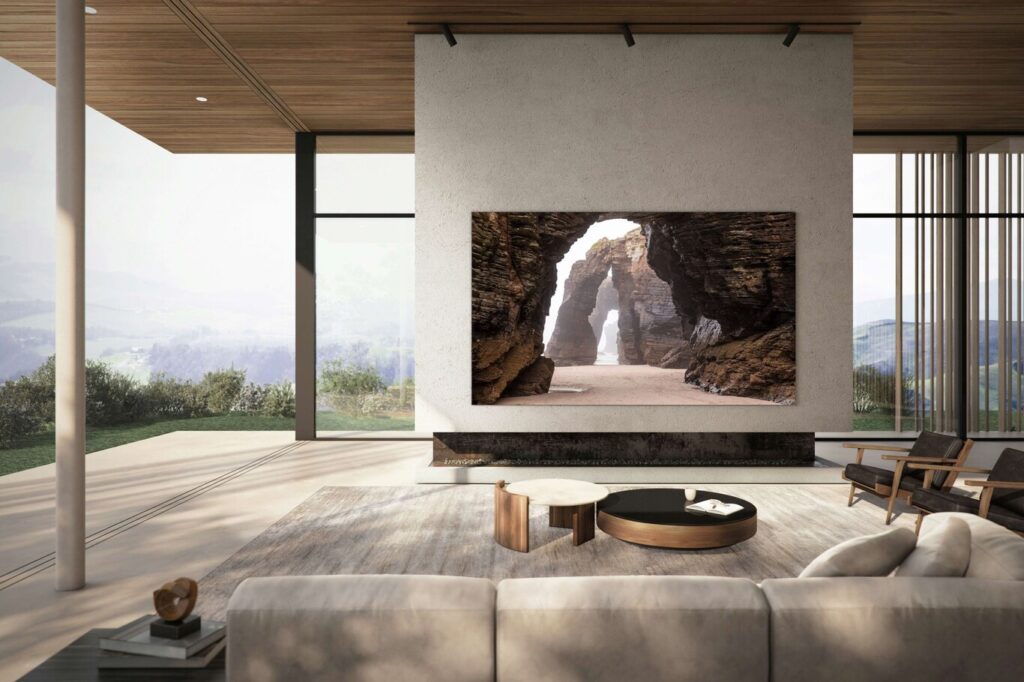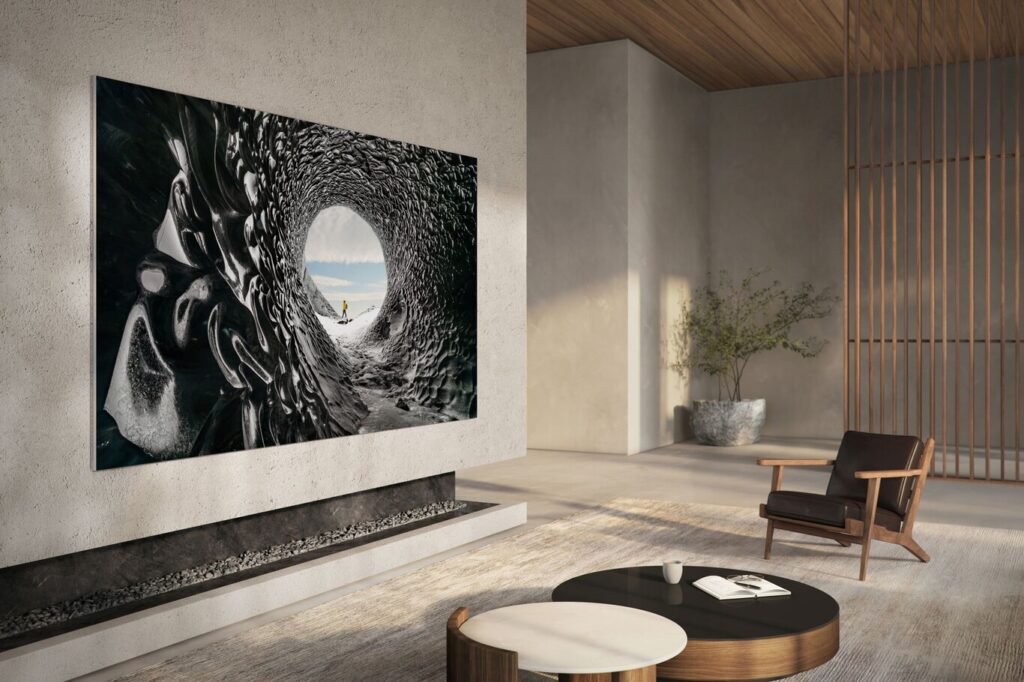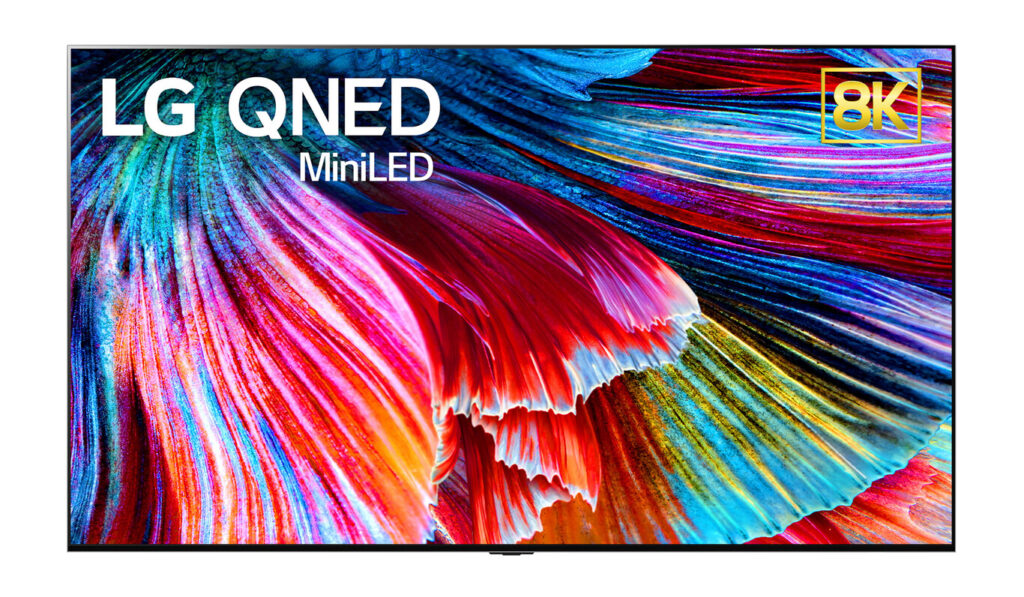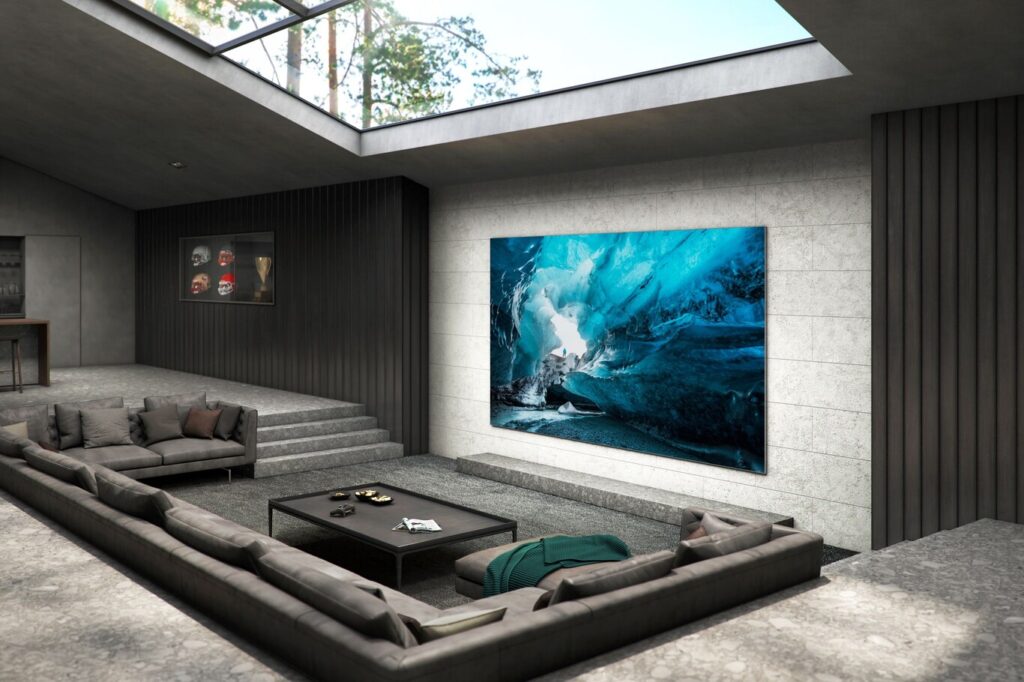Users who intend to buy a new TV during 2021 will have more options than ever before. During the last few weeks, and as a prelude to the CES, several manufacturers have surprised us by announcing that during the year that has just begun they will be placed in the stores a new generation of televisions equipped with a wider range of technologies than in previous years.
The terms MicroLED, MiniLED, or QNED, among others, are already part of the jargon used by both brands and users who are comfortable with television technology. However, this flood of innovations and acronyms can put a strain on people who are considering renewing their TVs and are overwhelmed by this wide variety of new technologies.
This difficulty is largely caused by the brands themselves, which often mix the legitimate designations that new technologies have and which have been previously accepted by the industry with their commercial designations designed to capture the attention of buyers. And they often don’t help us identify what they are trying to sell us.
The purpose of this article is to separate the wheat from the chaff. To shed some light on what all these acronyms mean, whether they are justified from a technical point of view, whether they are only in purely commercial interest, and, above all, whether the technologies they are trying to defend do add value to televisions and have a beneficial impact on our experience as users.
The frontier between these technologies is established by self-emitting pixels
2021 will be the year of lighting technologies. There are many other innovations in television that can have a tangible impact on the way it restores color, such as nano-crystals; on the precision with which it copes with scaling when it receives input signals with a resolution lower than the panel’s native resolution; on its ability to minimize color degradation when looking at the panel from a very slanting position…
However, most of the announcements that have been made by television manufacturers in recent weeks have as absolute highlights the LEDs that are responsible for delivering the light emitted by the television to our eyes. And there is an explanation for this strategy: lighting has a very profound impact on several essential parameters that define the image quality, such as contrast ratio, depth of blacks, ability to deliver the brightness, or the amount of information that can be retrieved in both the shaded and the more illuminated areas.
This starting point gives us a clear clue about which two technologies we are most interested in paying attention to MicroLED and MiniLED. They are the ones that add value to the televisions that will be arriving at the stores over the next few weeks. However, before we look at these and other innovations, we must identify which technologies offer a self-emitting pixel array (each pixel has its light source) and which use a backlight grid in which the number of LEDs is less than the number of pixels on the panel.
The two technologies in which each of the pixels that make up the panel has its light source are OLED and MicroLED. And this gives them a clear advantage if we stick to their contrast ratio and the depth of their blacks. But that’s the end of what they have in common. OLED uses organic diodes, while MicroLED uses inorganic ones. The latter has a higher brightness delivery capacity and is essentially immune to degradation, so on paper, they offer a very long life without color degradation and the always undesirable image retention.
Currently, only two manufacturers have chosen to place MicroLED technology in our homes: Samsung and Sony. If we turn our attention to the digital signage market, we will discover that more brands also produce MicroLED panels, such as Konka, Tianma, or Jade Bird Display, among others. LG and TCL have confirmed that they already have several prototypes of panels that implement this technology, but in 2021 everything seems to indicate that whoever wants to get a MicroLED device will have to resort to the Samsung and Sony portfolios. And, unfortunately, the models proposed by these two brands currently have many inches. And presumably, they will be very expensive.

We can take as a reference the first domestic MicroLED TV commercialized by Samsung, which will have 110 inches and will arrive at the stores during the first quarter of this year with a price that will most likely put it out of reach of most users. Samsung uses the MicroLED name for these devices, but Sony uses the Crystal LED brand, although the technological basis behind both names is essentially the same. Sony has probably chosen that trade name because MicroLED panels can be transparent. And also flexible, just like OLEDs.
The alternative to using OLED or MicroLED panels with self-emitting pixels is to use LCD panels with peripheral lighting (Edge LED) or backlighting (Direct LED, FALD, or MiniLED). What we are now interested in knowing is that in TVs with peripheral lighting the LEDs are placed at the edges of the panel (usually next to its base), while when the backlight is Direct LED, FALD (Full Array Local Dimming), or MiniLED the matrix of inorganic LEDs resides just behind the panel.
In that case, how do these last three technologies differ? Essentially in the size of the LEDs, their quantity, their distribution, and the control electronics that are responsible for managing their operation, but these differences are important enough to make the performance of the TVs that use them very differently. This explains why a TV with MiniLED technology, which has smaller diodes and a much higher quantity, should offer us a significantly higher overall picture quality than Edge LED, Direct LED, and FALD devices even though they all lack self-emitting pixels.
The 2021 TV technologies exposed
After this first contact with some of the technologies that will be used by the televisions that will arrive at the stores during this year, we are interested in knowing what they offer us, and, above all, what impact they will have on our experience. This is precisely what we are going to try to unravel in this section of the article, in which not only MicroLED and MiniLED will take center stage, but also other interesting innovations in which we are worth having, such as OLED Evo or OD Zero.
MicroLED and Crystal LED
The reason why we have grouped these two technologies under the same heading has been weighed up a few paragraphs above: their technological basis is the same. Crystal LED is the trade name used by Sony when describing its MicroLED devices, so from now on we will use only this last designation.
The key component of this innovation, as we have seen, is its tiny inorganic LEDs. In early 2020, at the annual ISE in Amsterdam, we saw the first Samsung MicroLED TVs in action, and their image quality is amazing. The most advanced panels that the South Korean brand had at the time had a 0.6 mm pixel pitch, so it’s likely that that 110-inch domestic TV that will hit the market early next spring will use those same panels.
Like OLED televisions, MicroLED devices offer us a very high native contrast ratio and abyssal blacks, but there are several sections in which the latter are superior to OLED panels. One of them is that its capacity to deliver brightness is significantly higher. These first MicroLED panels are capable of reaching 2000 nits in defined areas of the matrix, but there is no doubt that in the future when this technology is further developed, this figure will increase.

Although we have not yet been able to test a MicroLED device in our facilities, we have seen them in action on several occasions at the ISE and CES shows, and we have seen first-hand that they have a higher detail retrieval capability in shadow and high light regions than any other television technology. And with color, it’s the same: inorganic diodes, which benefit from a very mature technology, work side by side with nanocrystals to give us precise color reproduction and ambitious coverage.
Also, as I mentioned a few paragraphs above, the inorganic nature of the diodes makes them essentially immune to degradation and retention. The Samsung managers we spoke to assured us that their current MicroLED panels have a life span of approximately twenty-five years, which is the same as that offered by LCD televisions with LED backlighting.
However, the qualities of this technology do not end here. The self-emitting nature of the pixels and the minimal time they spend changing state should help MicroLED devices combat blooming and motion blur effectively (blooming is that defect that manifests itself in the form of halos surrounding the brightest areas of each frame). And, of course, there’s nothing to object to the native refresh rate that the first MicroLED panels work at, which is 120 Hz (the same rate used by today’s OLED and LCD devices).
Interestingly, the advantages of this innovation are not limited to image quality. The inorganic LED matrix that makes up a MicroLED panel can be manufactured in any size and aspect ratio we prefer, giving this technology unusual flexibility. In developing the 8K MicroLED display we saw at ISE in 2020, Samsung used thirty-six 80 x 42 cm frameless modules but could have integrated more to shape an even larger, higher-resolution display (although it would have the same pixel density).
The modular design of the MicroLED panels makes it possible to manufacture displays of almost any size and with any aspect ratio we prefer, although, of course, in a home use scenario the interesting thing is to manufacture devices with a manageable size and 16:9 aspect ratio. It is difficult not to be overwhelmed by the many qualities of MicroLED devices, but we should not overlook the fact that they also have several challenges ahead of them that manufacturers will have to solve if this technology is ever to gain a foothold in the market.
From a technical point of view, the biggest challenges are heat management and pixel density. LEDs are very efficient, but when they must deliver high brightness peaks they dissipate some of the energy they receive in the form of heat. The victims of high temperatures are not the diodes themselves, but the welds that fix them to the substrate on which they are placed, because they could degrade.
At Samsung, they claim to have solved this challenge by getting the diode matrix to dissipate 35% of the residual energy in the form of heat forward, and the other 65% backward. According to the South Korean brand, this capacity to transport heat energy ensures that the welds will not degrade. The other technical challenge is to miniaturize the diodes, even more, to be able to introduce more in the same space and make it possible to manufacture very high resolution and moderately sized televisions. We know that manufacturers are working in these areas, so we can be reasonably optimistic that MicroLED televisions will undergo development comparable to that of OLED and LCD devices in recent years.
MiniLED, Neo QLED, QNED and OD Zero
As we have seen a few paragraphs above, TVs with MiniLED technology are LCD devices in which the panel is backlit by a much denser LED matrix than those used by traditional LCD TVs with Edge LED, Direct LED, or FALD backlighting. Their diodes are significantly smaller than those in the latter devices, but not as much as those in MicroLED televisions, so the number of pixels in the panel is greater than the number of diodes in the backlight system.
Some of the brands that have bet on this technology are Samsung, LG, Hisense, and TCL. The latter has presented in this edition of CES its third generation MiniLED devices, which reflects that this Chinese company has been one of the first to bet on this innovation to enhance the performance of their televisions with an LCD panel.
To solve the backlighting, TCL engineers developed a matrix of 15 360 LEDs that allows to dim of the light of each scene acting on a total of 768 independent zones, a figure far higher than those handled by the most advanced FALD televisions, which rarely exceed 500 zones.
During this edition of the CES, TCL’s OD Zero (Optical Distance Zero) technology has aroused great interest, and innovation implemented by this brand in its third generation MiniLED devices. Thanks to it, this manufacturer has managed to reduce the thickness of their televisions to between 1.5 and 2 cm and has achieved this by eliminating the lens that was responsible for dispersing the light emitted by the LEDs, which are now so many and are so close together that they can remain completely attached to the LCD panel, and still ensure a uniform distribution of light.

Samsung and LG have also presented during this edition of the CES their televisions with MiniLED technology. Neo QLEDs are the first QLED devices to use this type of backlighting, and they also incorporate a new processing engine which, according to Samsung, is much more powerful than that of previous generations. LG has named its MiniLED televisions the QNED brand because, in addition to using this backlight technology, they use a new batch of nano-crystals to reproduce color more accurately (the Q in QNED comes from the English term Quantum Dot).
If you want to know in detail what impact MiniLED backlighting has on image quality. In any case, this technology manages to more precisely control the local attenuation of light, which helps you minimize blooming, increase the depth of blacks and recover more detail in both shaded and brighter areas of the panel.
OLED Evo: the new generation of OLED panels from LG
During the next few months, the last batch of OLED televisions of this brand will arrive at the stores and will do so with new technology: OLED Evo. This is the name that LG has given to its new generation of OLED panels, devices with organic diodes that, according to the South Korean company, will offer us a greater capacity to deliver the brightness, a higher level of detail, and images with greater depth. We will check it out as soon as one of these OLED televisions falls into our hands. One more note: the term ‘Evo’ suggests that these panels are the result of the evolution of the previous OLED panels of this brand.
MicroLED will be the end of the road, for the time being

Everything we have reviewed in this article invites us to accept that the most advanced, and also the most promising, of all the television technologies that are going to land in stores over the next few months is MicroLED. Its superiority if we stick to the image quality is very clear. Moreover, this is not a statement based only on theory. We have seen in operation the prototypes in which it is inspired the television MicroLED of 110 inches that Samsung is about to place in the stores, and its image quality is objectively outstanding.
The problem is that the first MicroLED televisions will most likely be priced out of reach for most users. They will be premium devices at a premium price. The usual thing when a new technology as advanced as this arrives. However, there is no doubt that its cost will be drastically reduced when the technology is further developed and the production of the panels can benefit from the economy of scale. Let’s keep our fingers crossed that this milestone won’t force us to wait too long.
This post may contain affiliate links, which means that I may receive a commission if you make a purchase using these links. As an Amazon Associate, I earn from qualifying purchases.

